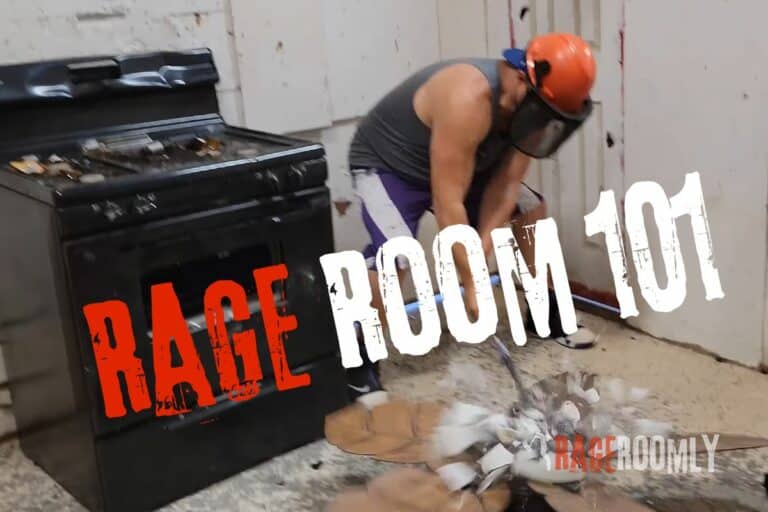Rage rooms, sometimes known as “smash rooms,” are designed to be a space where you can vent pent-up emotions by demolishing objects within a controlled environment. If you’ve ever been curious about them, you might find the concept appealing as a novel way to release stress or anger. These rooms provide a unique experience where you can shatter, break, and destroy items to your heart’s content. But what if the experience takes an unforeseen turn and you hurt yourself amidst the chaos?
The very nature of rage rooms encourages you to let go of your inhibitions and engage physically with your surroundings, which inherently comes with risks. Despite safety gear and precautions, the intensity of the activity can lead to accidents if you’re not careful. From personal experience, I have seen people get carried away and end up with minor injuries, such as scrapes or bruises. Therefore, it’s crucial to understand that while rage rooms might seem like a perfect place to unleash, they are not without potential for self-harm, and you should always be mindful of your well-being.
Key Takeaways
- Rage rooms offer a physical way to cope with anger and stress.
- Safety risks are present despite precautions taken in rage rooms.
- Being mindful of one’s actions is essential to avoid self-harm.
Understanding Rage Rooms
Rage rooms, also known as anger rooms or smash rooms, offer you a unique venue to vent frustrations by breaking objects in a controlled environment. While they cater to your need for emotional release, they also raise questions about safety and psychological effects.
Concept and Popularity
The concept of a rage room is simple: you enter a room filled with breakable items and, equipped with safety gear, you’re allowed to smash these items to pieces. From my own experiences, I can tell you that the attraction to these places has surged, as they offer a physical outlet for aggression and stress. It’s not uncommon to find individuals or groups booking sessions to release tension, celebrate occasions, or just for an unconventional workout.
Psychological Aspects
When visiting a rage room, you’re essentially seeking a way to cope with anger and stress. Professionals, like clinical psychologists, caution that while the immediate rush can be euphoric, it’s crucial to address the underlying issues that trigger these emotions. I’ve learned that for sustainable mental health, these rooms should complement, not replace, traditional therapeutic practices.
Rage Room Safety Precautions
Safety is paramount in rage rooms. During my visits, I’ve always been provided with protective gear such as gloves, goggles, and a helmet to prevent injury. The rooms are also designed to contain the destruction so that once you’ve smashed your last plate, you can leave all the cleanup to the staff. Nonetheless, accidents can happen, so I follow all the provided guidelines rigorously to ensure I can enjoy the experience without hurting myself.
Remember to handle each piece of equipment with care, and never underestimate the importance of the safety instructions you are given before entering the rage room. Your safety is as significant as the exhilarating experience of channeling your inner turmoil into the objects you’re breaking.
The Psychology of Anger and Destruction
Exploring the role of rage rooms, psychologists often view them as spaces for emotional release. Your interaction with these environments can be telling of how you handle frustration.
Emotional Release and Mental Health
You might find that smashing objects in a rage room provides a temporary sense of relief from pent-up anger. Therapists sometimes suggest that activities involving destruction can serve as a physical manifestation of letting go of internal turmoil. However, mental health professionals tend to stress that such experiences should complement, not replace, ongoing anger management strategies. Through my experience, the satisfying crash of shattering glass often echoed the release of personal frustrations.
Potential Risks of Misusing Rage Rooms
Though rage rooms are built around the idea of managing anger in a seemingly healthy way, they are not without risks. Aggression and violence, even in controlled environments like rage rooms, can sometimes reinforce aggressive behaviors rather than curbing them. It’s critical to remember that a session of smashing objects does not equate to therapy. Always seek the guidance of a therapist if you sense that your anger might be leaning toward a destructive path. There was a time when, despite the exhilaration, I recognized the importance of discussing my rage room experiences with a mental health professional to ensure it remained a positive outlet.
Alternatives to Rage Rooms
When exploring ways to cope with anger and stress, it’s beneficial to consider alternatives that promote long-term emotional well-being rather than short-lived relief. These options can help you address underlying issues effectively.
Professional Help and Therapies
Seeking professional help, such as therapy, can be a transformative experience. Therapists employ techniques like cognitive restructuring to change negative thought patterns, communication skills training to improve your interactions with others, and various forms of therapy to help you understand and manage your emotions. A time when I felt overwhelmed, I found speaking with a psychologist helpful; they introduced me to mindfulness-based cognitive therapy (MBCT) which combines mindfulness practices like meditation with cognitive therapy.
Self-help and Relaxation Techniques
In addition, self-help strategies and relaxation techniques can be incredibly effective. I’ve personally benefited from daily exercise, finding that a brisk walk or a session at the gym can be as cathartic as anything I did in a rage room. Meditation and deep breathing exercises can also provide a sense of tranquility. Journaling is another tool that has allowed me to vent safely and reflect on my emotional state. Lastly, practicing mindfulness can help you stay connected with the present, reducing the likelihood of dwelling on anger-inducing thoughts.
Consequences of Self-Harm in Rage Rooms
It’s essential to remember that although rage rooms can be a place to let off steam, they’re not without risks. If you’re not careful, the line between releasing anger and causing self-harm can become blurred, leading to unintended physical and psychological consequences.
Physical Injuries and Liability
Physical injuries are the most immediate risk you face in a rage room. Despite safety gear, accidents can happen. Imagine swinging at a piece of furniture and missing, potentially resulting in a sprained wrist or even a broken bone. It’s a scenario that could easily lead to an ER visit, which not only brings pain and discomfort but may also involve personal liability, depending on the waiver you signed.
- Common physical injuries in rage rooms:
- Bruises
- Cuts
- Broken bones
Should you hurt yourself, immediate help might be available on-site, but it’s vital to understand what injury liabilities are outlined in the waivers. Some establishments might not cover costs for self-injury, shifting medical responsibility to you.
Psychological Impact and Negative Reinforcement
On a deeper level, rage rooms can impact your mental health by providing negative reinforcement for expressing anger. One time, after yelling and smashing a printer to smithereens, I noticed my heart racing not just with adrenalized satisfaction but also with a tinge of fear—had I gone too far? Was I really managing my anger, or was it managing me?
This kind of scenario can exacerbate anxiety disorders and create a false sense of coping skills, drawing you back each time you feel overwhelmed. As someone who’s frequented many rage rooms, I’ve seen people, including myself, blur the line between therapeutic release and harmful behavior. It often takes more effective anger management strategies to address the root causes of our anger and develop healthy outlets.






